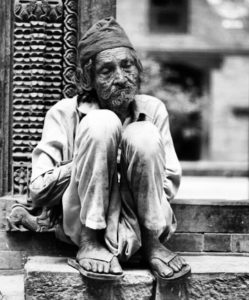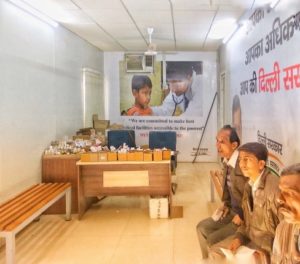
As rightly said by Lata Sinha, “In the modern understanding of the caste system, the element of caste is predominant and the element of system is suppressed considerably”. A stark differentiation needs to be made between the caste system and casteism in India. The latter is the rigid practice and belief of caste in society without any space for rationale. Prominently so, casteism has led to numerous distortions within the caste system of India.
‘Caste’ and ‘Politics’ – two of the most powerful and controversial aspects of Indian society came together to become incredibly persistent and influential in people’s lives.
The caste system of India is rooted from the pre-independence period when the varna system was introduced by the Brahmins; hierarchical jobs assigned according to caste supposedly determined by birth. Clearly, a social evil, this system of discrimination developed to be entrenched within the psyche of Indians. There had been various efforts to eradicate this system, however, the society would still experience re-castization repeatedly. The Mandal Commission, for example, emphasised the importance of Dalit and Adivasi reservations in government and educational institutions. Agitations broke out to demand the same for Scheduled Castes/Tribes as well as Other Backward Castes, and political parties promoted it in order to gain votes. The Mandal reservations ended up becoming an open-ended policy which would be granted to anyone proving to be a part of the wide variety of the ‘socially and educationally’ backwards.
B.R. Ambedkar played an extremely important role in the upliftment of the lower castes and the downtrodden, besides Mahatma Gandhi. Having experienced it from childhood himself, he was among the few national leaders in the forefront of bringing forth a democratic and an egalitarian India. He led marches, organised communities and represented the interests of the Dalits (lowest caste) in the Constituent Assembly to mark the beginning of anti-caste movements. He founded the Independent Labour Party and an All India Scheme Confederation before independence to try to empower the depressed castes. Other efforts like the Dalit Panther social movement and the formation of the Bahujan Samajwadi Party, tried to do the same. The breakdown of the Jajmani System proved to be a major breakthrough.
Despite all this, caste is still key in Indian Politics. Why is it so? This is because our society cannot go forward in this regard till casteism colours the way people listen and talk. Differentiations based on caste have been so deeply embedded in the structure of our society, that it almost becomes a hurdle in nation building and integration due to its characteristics like blind caste loyalty and prestige.
In a caste-dominated society, the concept of us  versus them is strong and well established and hence caste feelings are very easily offended. Lack of education or rather its poor standards make generations of rural India ignorant to such an extensive problem. Though a completely rural concept, there is no denying of its existence in urban areas in the form of residential discrimination and other violence. In the month of September 2017, a Dalit teen in Gujarat was attacked by upper caste men for sporting a moustache. This occurred just days after another teen was killed for watching religious performances at a temple. Domestic workers in Pune exposed the systematic discrimination they experience where ‘upper’ caste workers would be employed for housework whereas the ‘lower’ caste ones for other purposes, distant from the sacred kitchen. Other than such manifestations, the attack on JNU could also be considered as one insistent on upper caste dominance since it opposed inclusiveness by accusing poor and marginalised youth of using taxpayer money to support ‘anti-national’ politics.
versus them is strong and well established and hence caste feelings are very easily offended. Lack of education or rather its poor standards make generations of rural India ignorant to such an extensive problem. Though a completely rural concept, there is no denying of its existence in urban areas in the form of residential discrimination and other violence. In the month of September 2017, a Dalit teen in Gujarat was attacked by upper caste men for sporting a moustache. This occurred just days after another teen was killed for watching religious performances at a temple. Domestic workers in Pune exposed the systematic discrimination they experience where ‘upper’ caste workers would be employed for housework whereas the ‘lower’ caste ones for other purposes, distant from the sacred kitchen. Other than such manifestations, the attack on JNU could also be considered as one insistent on upper caste dominance since it opposed inclusiveness by accusing poor and marginalised youth of using taxpayer money to support ‘anti-national’ politics.
The Supreme Court made a verdict suggesting the separation of religion, caste and creed from politics. But again, it was unclear what would be the grounds of offence and whether politicians who practised casteism would be disqualified.
The truth is that though the politicisation of caste has been acknowledged, it is likely to become further deeply rooted, evident from the very recent Patel reservation agitations in Gujarat, the Jat agitations in Haryana and actions of the Khap Panchayat in North India. There is still a confusion whether caste is just an identity or merely a hierarchy. Clearly, the government has failed to ensure the end of caste-based discrimination in our country, and so it is important for the people to discontinue its acceptance as a social norm.
Author: Anushka Gupta


With thanks! Valuable information!
Thanks, it is very informative
Buy Tadacip Progesterone Medication Secure Acheter Xenical Orlistat En Ligne viagra Pillsforyou24 Neem
Levitra From Canada Zithromax Skin Abscess Priligy Spray Comprare Il Viagra Dapoxetine Price